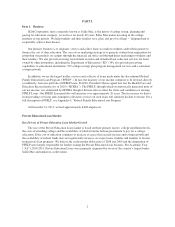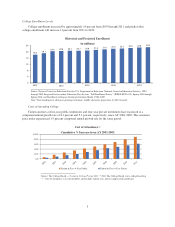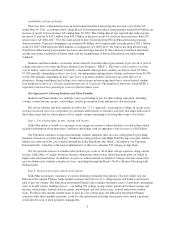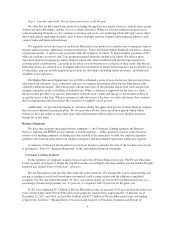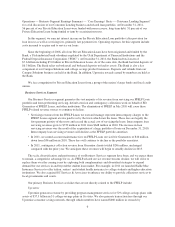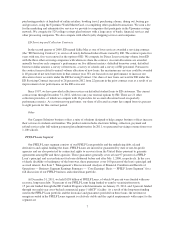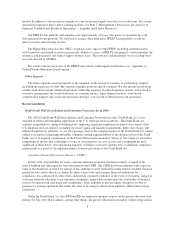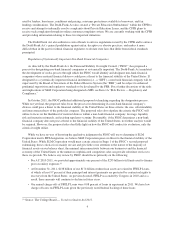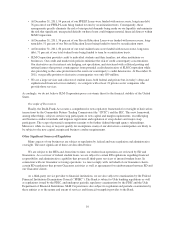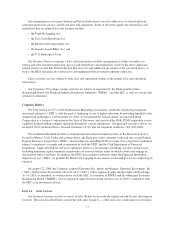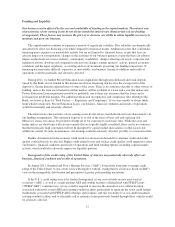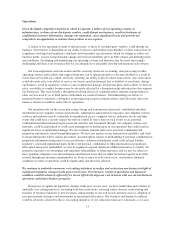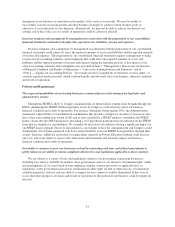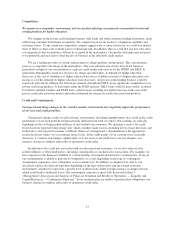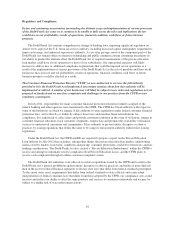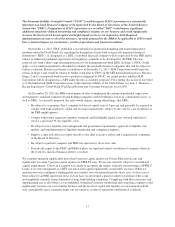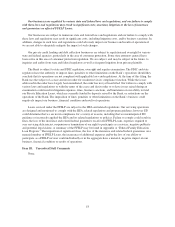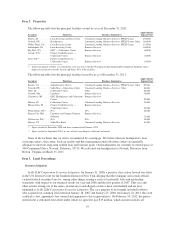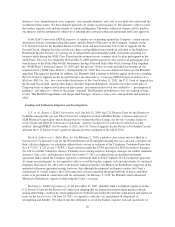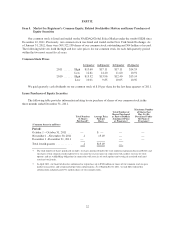Sallie Mae 2011 Annual Report Download - page 14
Download and view the complete annual report
Please find page 14 of the 2011 Sallie Mae annual report below. You can navigate through the pages in the report by either clicking on the pages listed below, or by using the keyword search tool below to find specific information within the annual report.Funding and Liquidity.
Our business can be affected by the cost and availability of funding in the capital markets. The interest rate
characteristics of our earning assets do not always match the interest rate characteristics of our funding
arrangements. These factors may increase the price of or decrease our ability to obtain liquidity necessary to
maintain and grow our business.
The capital markets continue to experience periods of significant volatility. This volatility can dramatically
and adversely affect our financing costs when compared to historical norms. Additional factors that could make
financing more expensive or unavailable include, but are not limited to, financial losses, events that have an
adverse impact on our reputation, changes in the activities of our business partners, events that have an adverse
impact on the financial services industry, counterparty availability, changes affecting our assets, corporate and
regulatory actions, absolute and comparative interest rate changes, ratings agencies’ actions, general economic
conditions and the legal, regulatory, accounting and tax environments governing our funding transactions. If
financing becomes more difficult, expensive or unavailable, our business, financial condition and results of
operations could be materially and adversely affected.
During 2011, we funded Private Education Loan originations through term-brokered and retail deposits
raised by the Bank. Assets funded in this manner result in re-financing risk because the average term of the
deposits is shorter than the expected term of some of the assets. There is no assurance that this or other sources of
funding, such as the term asset-backed securities market, will be available at a level and a cost that makes new
Private Education Loan originations possible or profitable, nor is there any assurance that the loans can be
re-financed at profitable margins. For additional discussion on regulatory and compliance risks relating to the
Bank, see below at Item 1A “Risk Factors — Regulatory and Compliance.” If we were unable to obtain funds
from which to make new Private Education Loans, our business, financial condition and results of operations
would be materially and adversely affected.
The interest rate characteristics of our earning assets do not always match the interest rate characteristics of
our funding arrangements. This mismatch exposes us to risk in the form of basis risk and repricing risk.
Moreover, it may not always be possible to hedge all of our exposure to such basis risks. While the asset and
hedge indices are short-term with rate movements that are typically highly correlated, there can be no assurance
that the historically high correlation will not be disrupted by capital market dislocations or other factors not
within our control. In such circumstances, our earnings could be adversely affected, possibly to a material extent.
Further deterioration in the economy could result in a decrease in demand for consumer credit and credit
quality could adversely be affected. Higher credit-related losses and weaker credit quality could negatively affect
our business, financial condition and results of operations and limit funding options, including capital markets
activity, which could also adversely impact our liquidity position.
Downgrades of the credit rating of the United States of America may materially adversely affect our
business, financial condition and results of operations.
In August 2011, Standard and Poor’s Ratings Services (“S&P”) lowered the long-term sovereign credit
rating of the United States to AA+ from AAA with negative outlook, stating that its action was based on S&P’s
view on the rising public debt burden and perception of greater policymaking uncertainty.
If the U.S.’s credit rating were to be further downgraded: (i) our cost of funds on new asset-backed
securities (“ABS”), as well as certain existing ABS and conduit facilities collateralized with FFELP Loans
(“FFELP ABS”) could increase; (ii) we could be required to increase the amount of over-collateralization
associated with newly issued ABS and existing conduit facilities particularly to maintain the AAA credit ratings
traditionally associated with FFELP ABS offerings and facilities; and (iii) our ability to access and/or maintain
existing conduit facilities and to efficiently sell or refinance loans previously funded through these vehicles could
be adversely affected.
12


